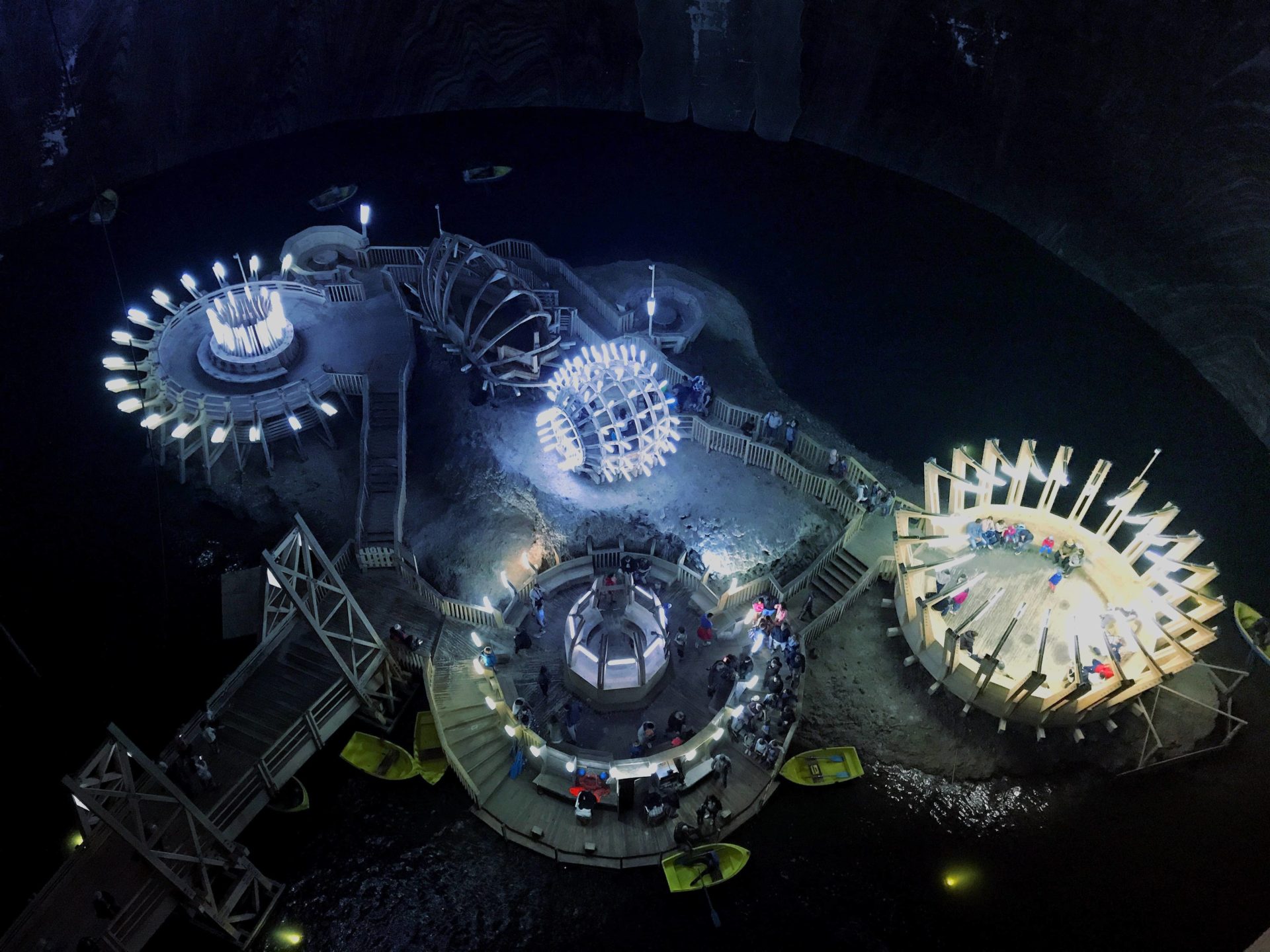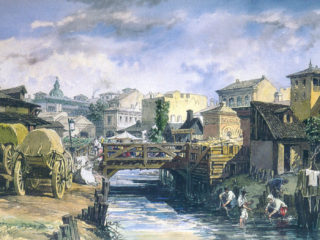More than mere tourist destinations, the salt mines have been renowned for centuries for their efficiency in treating many respiratory diseases, as well as being beneficial for skin treatment. Hippocrates himself used salt to cure various ailments, and advised others to do so. Whether you want to try them for health purposes or you’re excited by the attractions (a boat trip, a ping-pong game, a museum visit or meditation in an underground church—yes, you read that right!), here are five salt mines in Romania worth visiting. Also, bring a sweater.
Turda
Possibly the most famous in Romania at the moment, the salt mine at Turda (31 km from Cluj-Napoca) has been known since antiquity and it was exploited starting with the Roman occupation in Dacia, producing table salt until 1932, when it was officially closed. In 1992 it was opened for tourism and halotherapy, a form of alternative medicine that uses salt.
In 2010, after 2 years of serious of renovations and improvements, it was once again open to the public. Nowadays, the futuristic-looking salt mine is open all year long, and is nothing short of an amusement park. It sports a Ferris wheel, table tennis, mini golfing, and bowling facilities, paddle boating and, for the music aficionados, an amphitheatre with 180 seats.
Praid
The salt exploitation at Praid, a village in Harghita county, also dates back to Roman times. The first aerosol therapy centre was opened to the public in 1960, and it has been gradually improved and enlarged with new features. Today, besides taking advantage of speleotherapy and climatotherapy, visitors can enjoy playgrounds, sport facilities, a wine gallery with a selection of wines from 25 vineyards across the country, a wellness centre and numerous hiking opportunities around the Salt Canion.
The mine is conveniently located in the proximity of several touristic areas, 135 km from Brașov, 75 km from the medieval town of Sighișoara, and only 7 km from Sovata resort, with its famous helio-thermal salty lake, Ursu.
Slănic Prahova
Priding itself in being the largest salt mine in Europe, Slănic Prahova is, just like the previous ones, no longer in use for extraction purposes, but open to the public for treating respiratory infections. Its 14 galleries are massive, at over 55 metres high, and have a permanent microclimate, maintaining a constant temperature of 13° C and 60% humidity throughout the year, and it’s no wonder—though, debatable—that some people claim that Slănic mine has the purest air on earth.
Only 100 kilometres north of Bucharest, the mine has another unique feature: one of the most famous galleries, the Genesis Hall, sports sculptures and busts made of salt—including the one of Decebalus, the last Dacian king—by local artists Iustin Năstase and Oana Brezeanu.
Târgu Ocna
Târgu Ocna mine is situated in the Eastern part of Romania, in Bacău county, and it is one of the oldest and largest salt mines in Romania, having double function: on one hand it extracts, prepares, and sells the salt, and, on the other, it offers touristic and healthcare services. Besides respiratory treatment centres, playgrounds and sports facilities, the mine hosts a salt museum, a performance hall, as well as an Orthodox church.
Cacica
Archeological research, conducted between 1952 and 1989, showed that Cacica is one of the oldest recrystallised salt mines in Europe, salt that is obtained from brine, through boiling and evaporation. According to the researchers, it is as old as the early Neolithic period. It is, also, one of the largest salt reserves in Romania, with an estimated reserve of 238 million tones of sodium chloride.
The touristic side of Cacica mine (36 km from Suceava, in the north of Romania) includes a dance hall, used to host dance events and receptions, two chapels (a Roman-Catholic and an Orthodox one), a salt museum and a football field.











